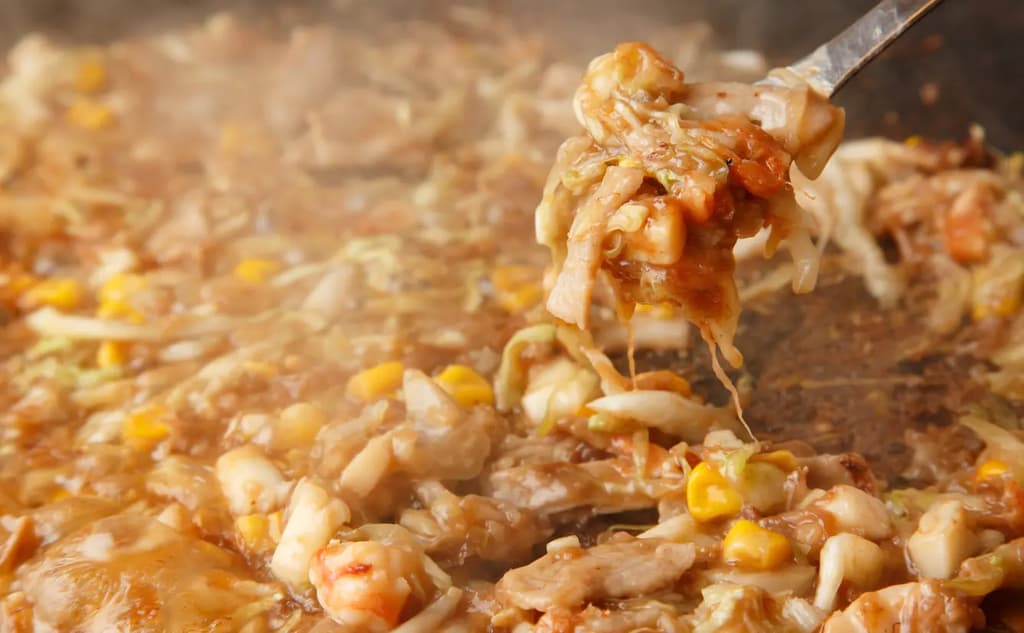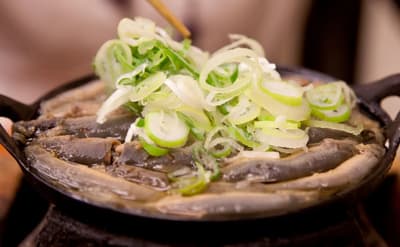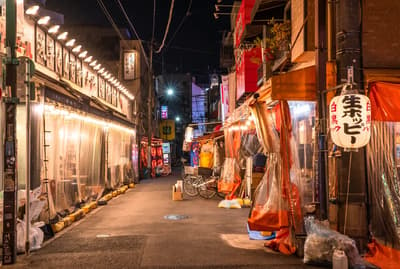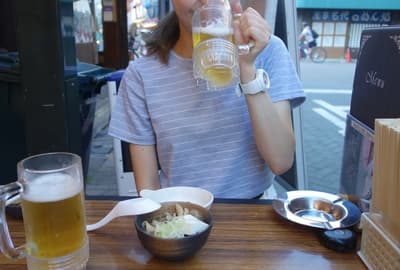Monjayaki is a local dish of Tokyo known for its sizzling savory aroma, unique combination of runny consistency and crunchy texture. Here we introduce about monjayaki: how to enjoy it, and recommended some restaurants to try it.
What is Monjayaki (もんじゃ焼き)?
Monjayaki is a type of ‘konamono’ (food made with flour) dish, similar to takoyaki and okonomiyaki. It is made by dissolving flour in water and grilling it on a griddle, along with ingredients like cabbage, agetama (tempura scraps), and squid. Unlike okonomiyaki, which is cooked on both sides on a griddle like a solid pancake, monjayaki uses a lot more water than okonomiyaki, and is mixed with sauces and other seasonings. As a result, it does not fully solidify into a firm pancake-like shape on the griddle. Therefore, it is generally eaten while still partially cooked and retaining a slightly liquid consistency, using a small spatula.
In Tokyo, Tsukishima, and Asakusa are famous for monjayaki. In Tsukishima, there is a street called Tsukishima Monja Street, where more than 50 monjayaki restaurants are gathered. The savory aroma of the food being cooked right in front of you and the unique textures are the highlights of this local delicacy, which offers a unique dining experience exclusive to the area!
How to make Monjayaki
First, let’s prepare the ingredients and batter!
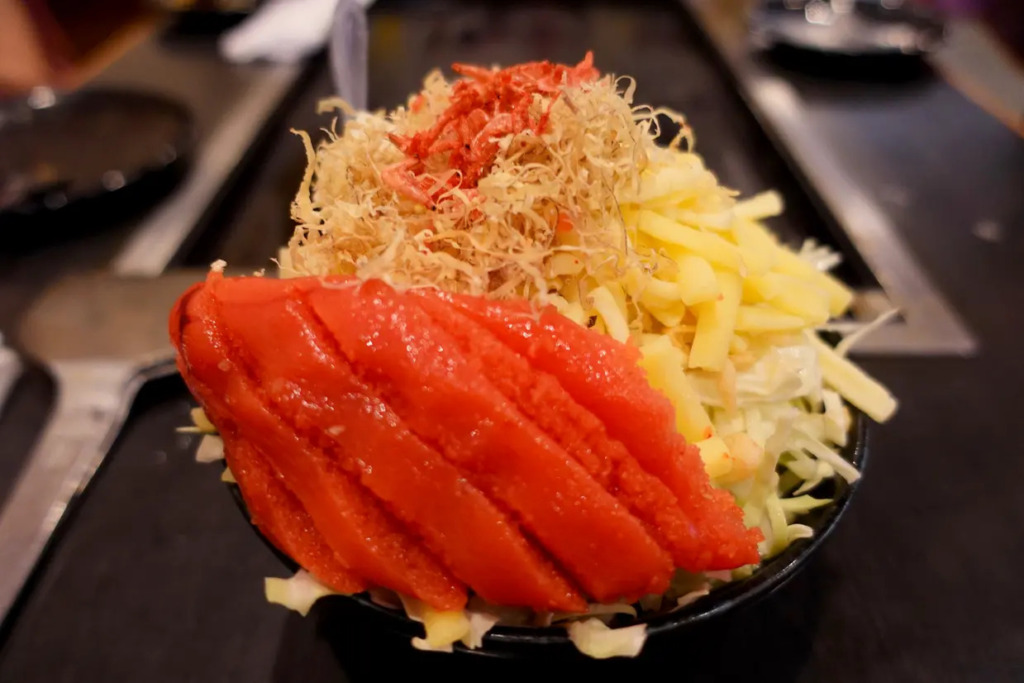
For the batter, dissolve flour in more water and season with sauce or other seasoning. Next, the ingredients such as cabbage, squid, agetama, etc. are placed in the batter.
Ingredients vary from region to region and from restaurant to restaurant, and sometimes include snack noodles, rice cakes, cheese, cod roe, pork, shrimp, and yakisoba noodles.
When the ingredients are ready, it’s time to grill them on the griddle!
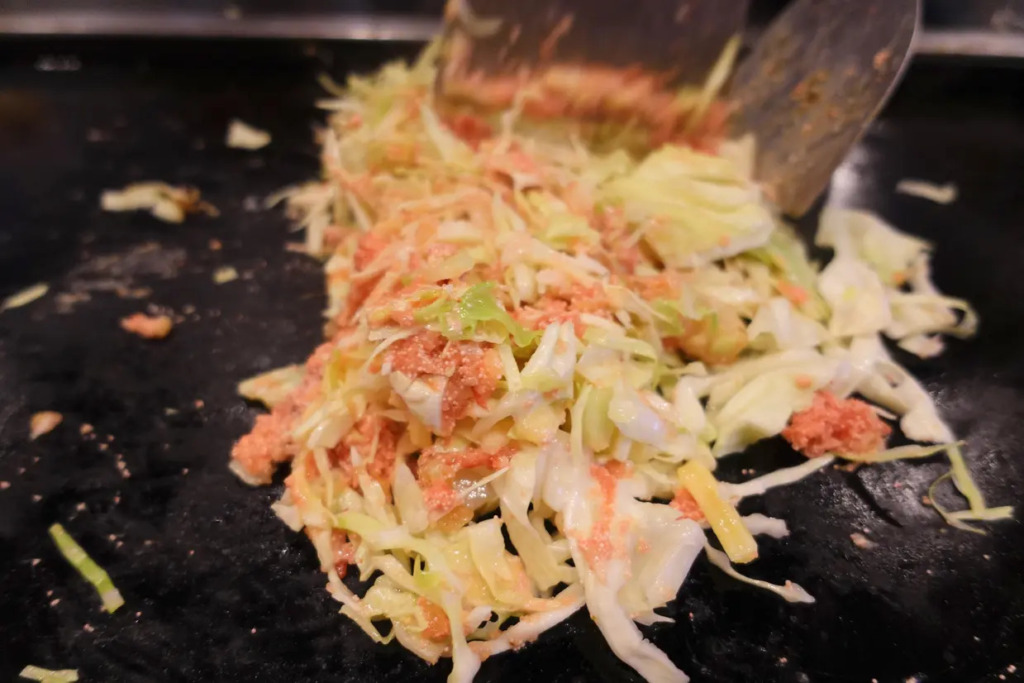
First, place only the ingredients on the griddle and stir-fry them in small pieces.
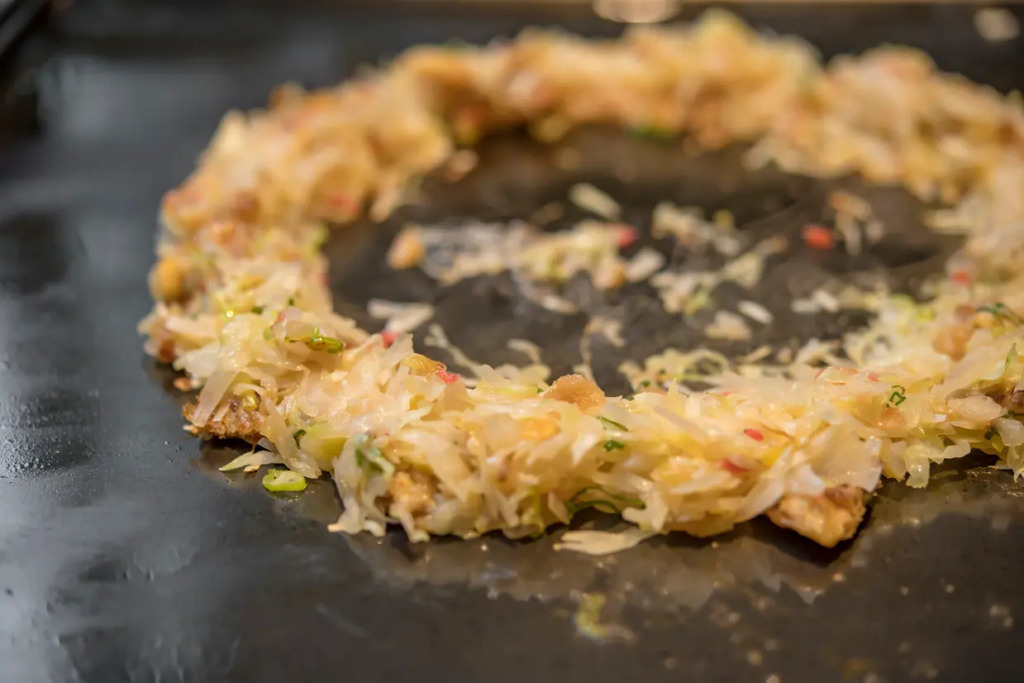
Make the ingredients into a donut-shaped ring to form the base, then pour the liquid batter into the center. As it cooks, the water in the dough will evaporate, allowing you to mix it with the ingredients at your preferred timing.
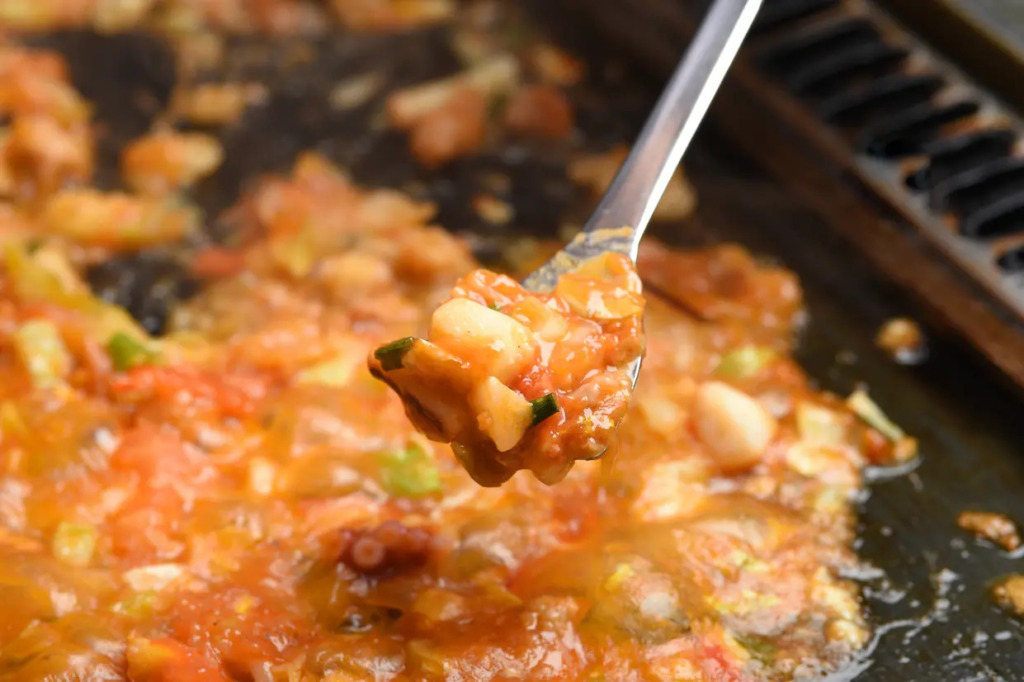
Begin eating from the outer edges of the dough as it cooks. At this point, press down on the dough with a spatula to sear it. The level of searing is a matter of personal preference. Enjoy the combination of the liquid texture and the crispy parts!
Let’s Go Eat Butadon!
This time, we, the editor team went to Monja Street in Tsukishima, Tokyo, to actually try monjayaki! Oshio, a long-established monja restaurant, is a popular restaurant with six branches in Tsukishima area. Among them, we visited the Nagomi branch, which is known for its relaxed atmosphere.
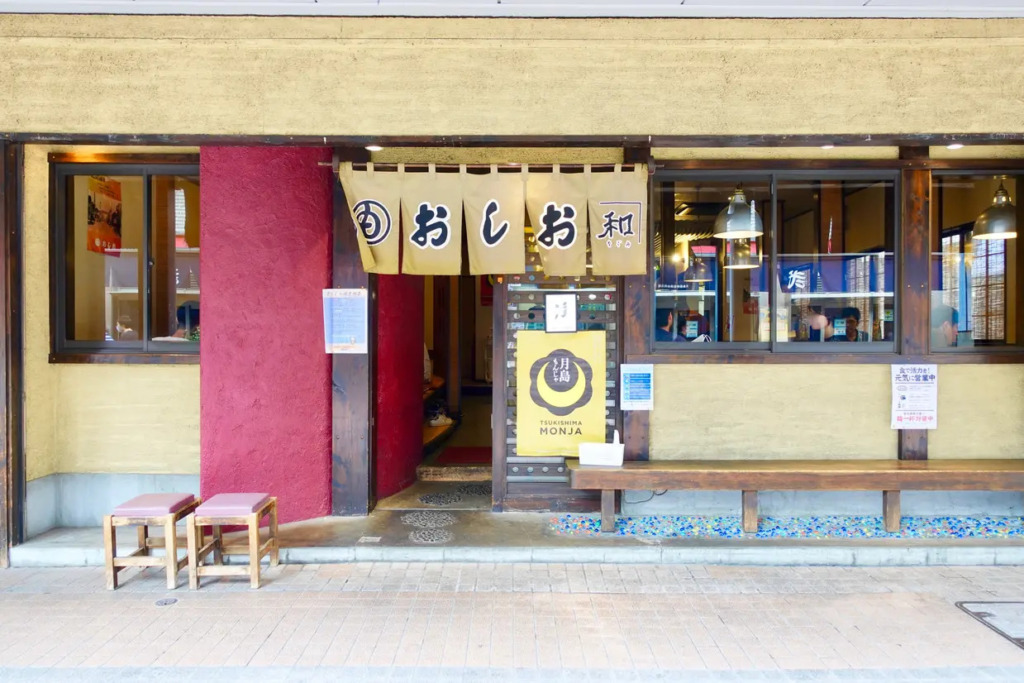
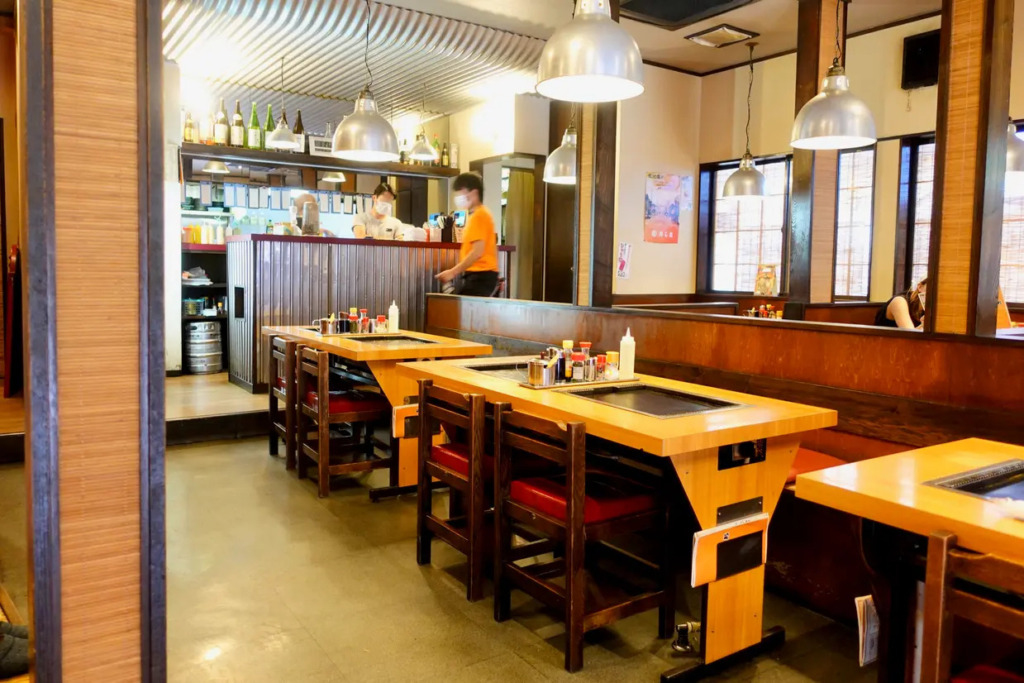
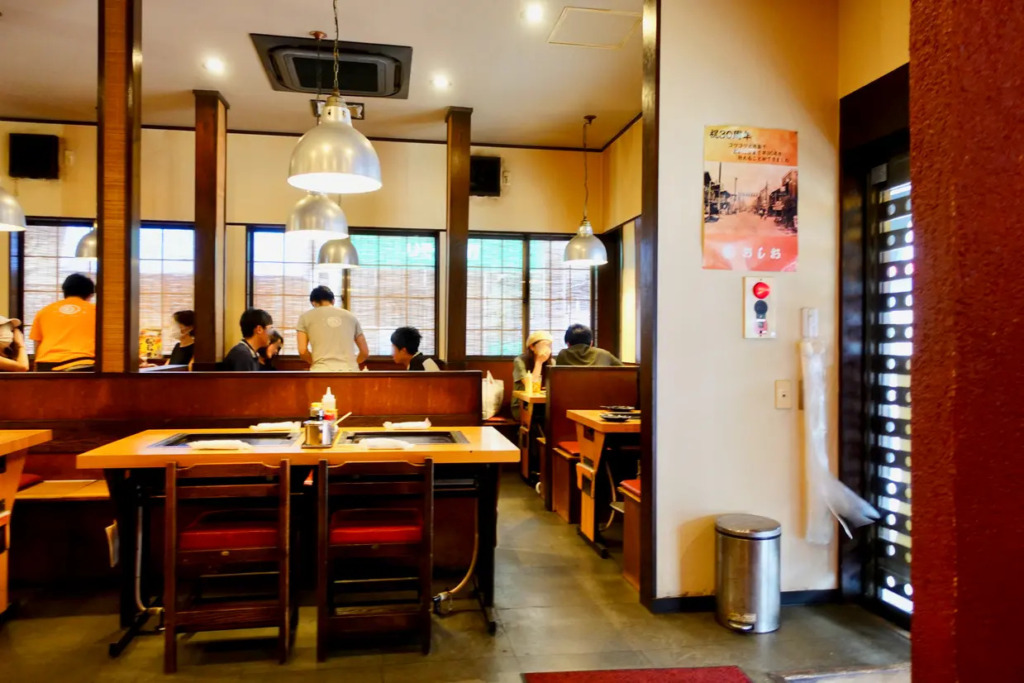
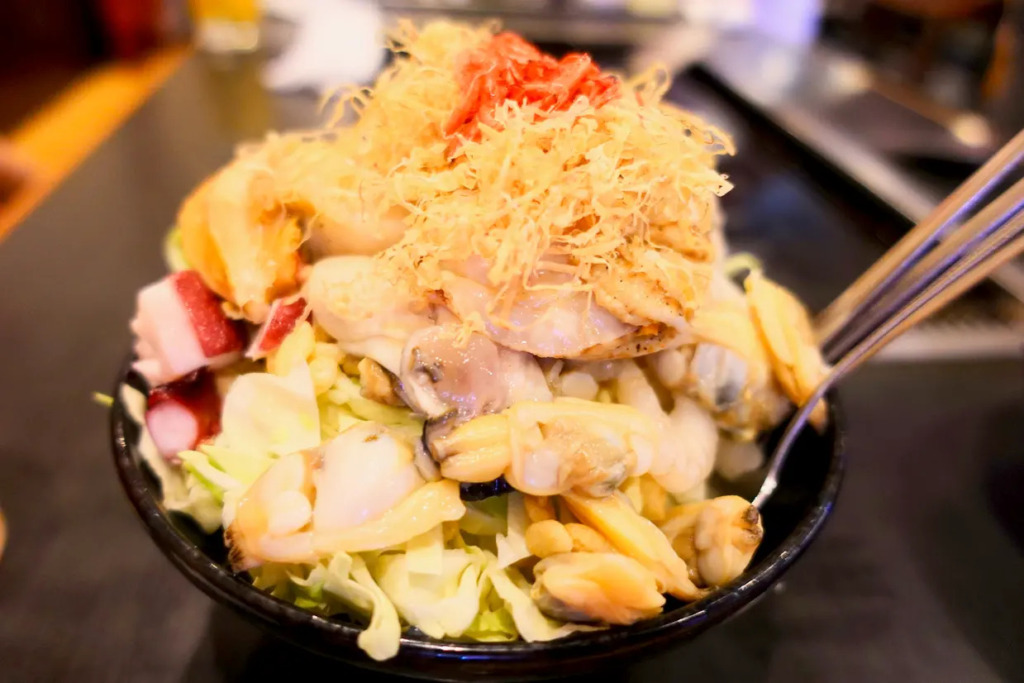
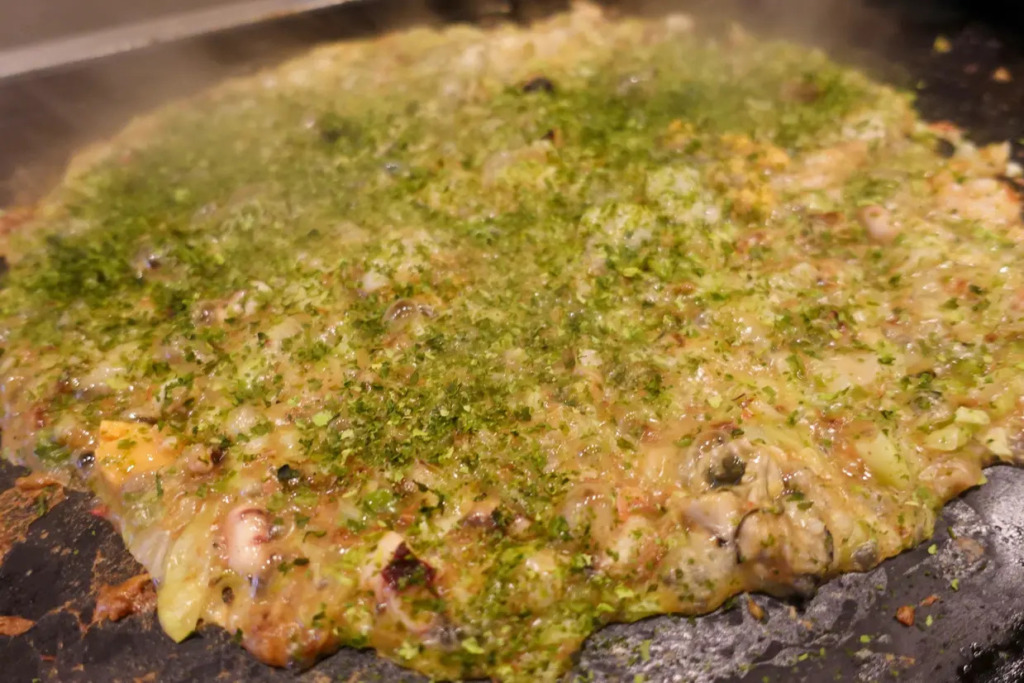
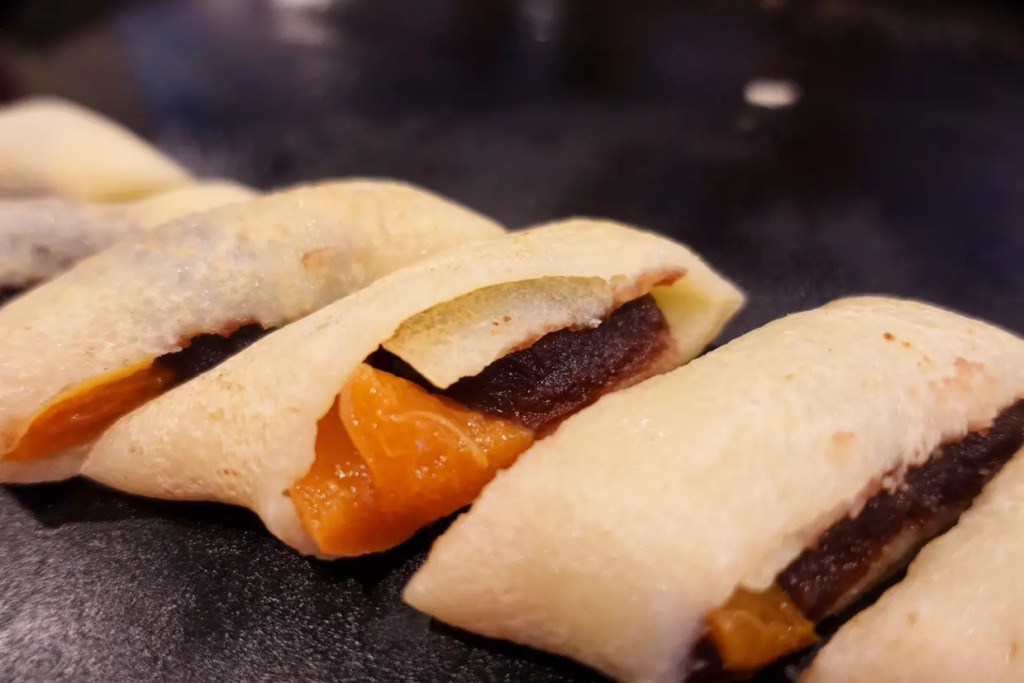
Review
The process of making monjayaki was like a fun activity: first, we enjoyed watching the skill of the staff, and then we tried making it ourselves. We were anxious about whether we would succeed, but we were very impressed when it turned out well. We felt that monjayaki is the perfect dish that satisfies both the desire for enjoyment and hunger. The Oshio Nagomi branch restaurant offers a wide variety of menu items, from standard to unique options. You can customize your monjayaki just the way you like it. With seating available at tables and in tatami rooms, it’s also suitable for families with children. Come and enjoy monjayaki!
Watch video of trying monjayaki on Yakatabune boat cruise
10 Monjayaki Restaurants
Monja Kura (もんじゃ蔵)
Monja Hazama (もんじゃ はざま)
Tsukishima Komachi (つきしま小町)
Monja Kondou Main Store (もんじゃ近どう 本店)
Monja Iroha Main Branch (もんじゃ いろは本店)
Monja Maguroya Tsukishima Honten (もんじゃ まぐろ家 月島本店)
Ebisuya (えびすや)
Noto Honten (能登 本店)
Kaisen Monja Kataoka (海鮮もんじゃ 片岡)
Monkichi (路地裏もんじゃ もん吉 本店)
Editor’s Comment
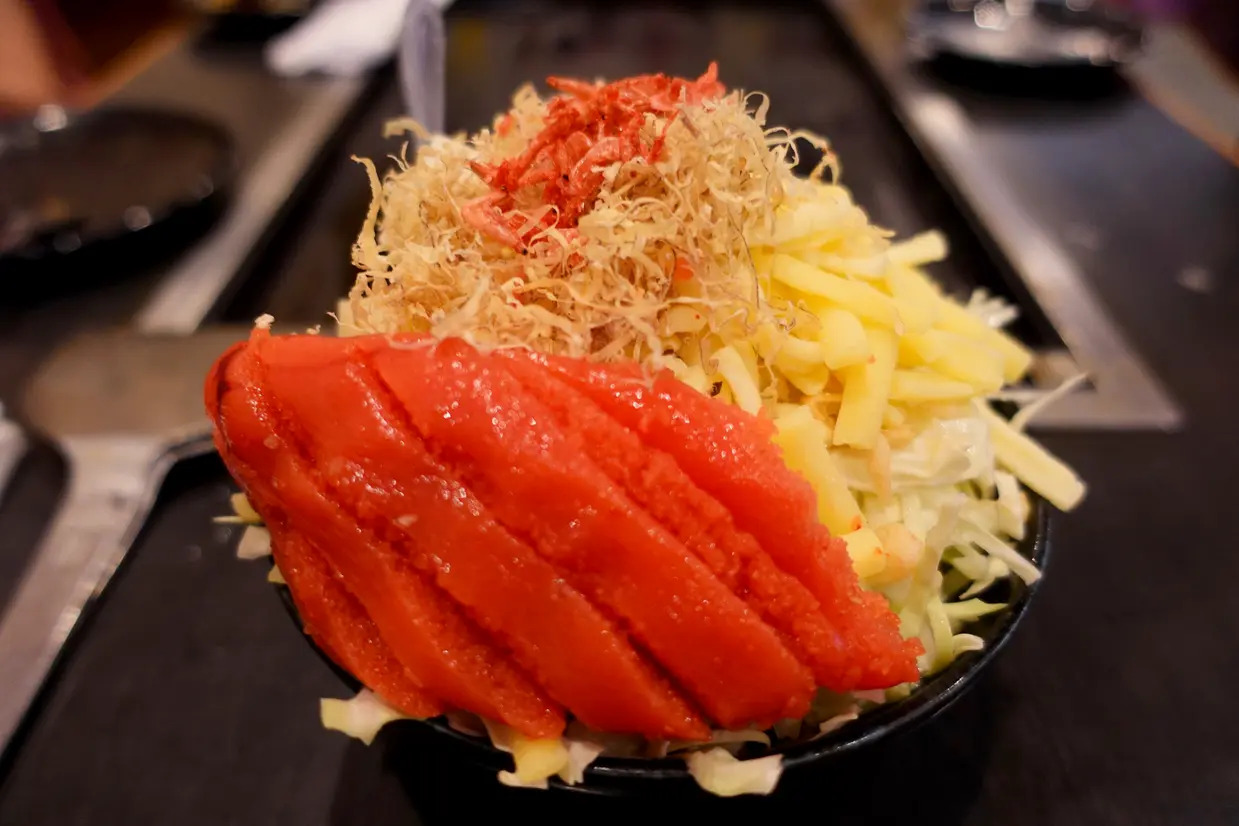
This time, we visited Monja Street in Tsukishima to try monjayaki. With so many restaurants to choose from, we found it challenging to decide where to go. Opting for the standard monjayaki this time, we’re eager to explore different varieties on our next visit and discover our personal favorite monjayaki!
